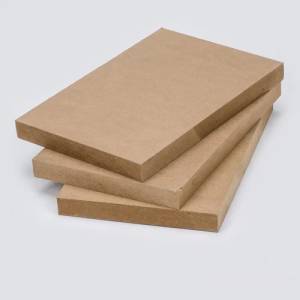
MDF (Medium-Density Fiberboard) is an engineered wood product manufactured by breaking down hardwood or softwood residuals into wood fibers, often combining them with wax and a resin binder, then forming them into panels by applying high temperature and pressure. This process results in a remarkably consistent and versatile material ideal for a wide range of applications.
Key Features & Benefits:
Applications:
MDF's versatility makes it suitable for a vast array of applications, including:
Types of MDF:
Different types of MDF exist, categorized based on factors such as:
Specifications (Example – this will vary by supplier):
Note: Always consult the manufacturer's specifications for detailed information on the specific MDF board you are using. Proper handling and storage are essential to prevent warping or damage. Appropriate safety precautions should be followed during cutting and handling.
This description provides a comprehensive overview of MDF board. Remember to specify the exact dimensions, density, and other details relevant to the specific product being sold.